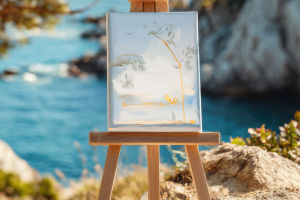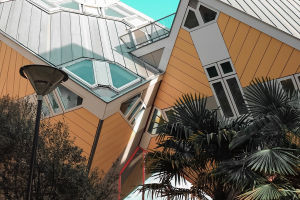When we think of art, we might picture a quiet gallery or a classic painting on a museum wall. But modern art is no longer limited to canvas and frames. It's on buildings, in apps, across digital spaces—and even in our pockets.
From colorful street murals to interactive digital creations, the diversity of modern art is breaking boundaries and reaching more people than ever. So, what does this wide world of art look like today? Let's explore it together.
Street Art: Creativity in Public Spaces
Street art stands as a powerful form of contemporary expression. From towering wall murals to stenciled sidewalk figures and chalk drawings that wash away with the rain, this art form injects creativity into the public spaces we move through daily. It transforms ordinary settings into compelling visual narratives, showing how urban environments can become canvases for shared stories.
What makes street art unique is its accessibility—no admission required. It frequently mirrors the spirit of the local community, addressing social concerns and emotions that traditional galleries might overlook.
Digital Art: Creativity Meets Technology
Digital art has changed everything. Using a tablet, computer, or even a smartphone, artists can now create complex, layered pieces with a single swipe or tap. Programs like Procreate and Adobe Photoshop are the modern artist's toolbox.
But digital art isn't just about drawing on a screen—it also includes animation, 3D modeling, virtual galleries, and even art that reacts to music or movement. Artists can easily share their work online, reaching global audiences instantly.
Virtual and Augmented Reality Art
Have you ever "walked" through an art gallery in a virtual space? Or held your phone up to a mural and watched it come to life with animation? That's the work of VR (virtual reality) and AR (augmented reality) art. This type of art blends technology with imagination, letting us experience creativity in whole new ways.
Artists can now create digital worlds we can explore, or design art that appears only through a phone screen. It's exciting, immersive, and opens the door to interaction—not just observation.
Art on Social Media
Artists post their process, share their inspirations, and build communities with fans and other creators in social media. Some artists even create work for social media—short-form video art, looping animations, or filter-based visuals. This makes art more personal and accessible. You don't have to visit a gallery to discover new art; you just need to scroll.
Art With a Message
Modern art often goes beyond beauty—it speaks up. Many artists use their work to talk about mental health, environmental issues, identity, or inequality. These pieces invite viewers to reflect, not just admire. A mural might call attention to pollution in the city. A digital poster might highlight education challenges in remote areas. This form of storytelling gives art a social role, turning it into a tool for connection and change.
The Blurring of Boundaries
One of the most exciting things about modern art is that it's hard to define. A painting might become part of a video game. A sculpture might include sound and motion sensors. An artist might be both a coder and a painter. The lines between art, design, performance, and technology are fading fast. This blend allows artists to explore new forms and audiences to experience art in new ways.
What Does Art Mean to You?
Have you seen a piece of art—on a wall, online, or in an app—that made you stop and think? Do you enjoy creating or exploring new types of visual work? Modern art invites us all in, whether we're creators or curious observers. Let's stay open to the many ways art can touch us—on sidewalks, on screens, and in our imaginations.
Because in today's world, art is everywhere—and it's more alive than ever.


